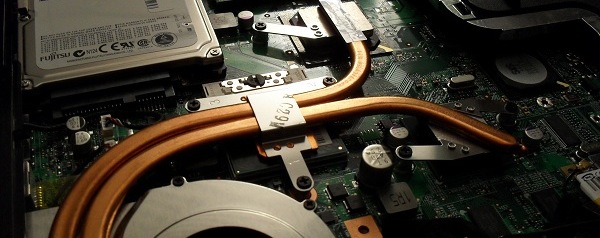
In the past decades the computer market has witness a major shift from desktop PCs to laptops. Almost everyone now owns at least one laptop. But despite their wide usage, their basic operation and hardware specifications have remained largely the domain of enthusiasts and computer geeks. Given that laptops are rather expensive machines, a bit of research can greatly improve purchase decision and user experience.
Laptops have the same basic components as any desktop computer, but unlike a desktop PC which has plenty of room for cooling, laptops have to keep everything going in a very small space. Since all computer components generate heat, keeping everything cooled down in a compact space can be very problematic. Good cooling solutions are expensive and add weight, thus laptop components are designed to be power-efficient and consequently generate far less heat than their desktop counterparts. Unfortunately, this also means they offer lower performance.
Heat is also the root of most laptop problems. Overheating leads to crippled performance and over time damages electronic components. The heating-cooling cycle of laptops is also higher than in desktops and the higher the difference between idle and intensive usage temperatures, the faster will the laptop age and eventually break.
So for long term use and good user experience, it is good to clean/blow/vacuum the laptop vents from time to time. Also make sure the laptop exhaust vents are not blocked when using it in bed or other similar soft surfaces.
All laptops have the following components:
- Motherboard
- Processor
- Video card
- System memory (RAM)
- Storage solution (HDD / SSD)
- Display
- Sound card
- Wireless card (network)
- Keyboard
- AC adapter
- Battery
- Touchpad
- Chassis
The most important are the motherboard, processor, video card, system memory, display and storage solution because these define the laptop’s performance and overall user experience. Of these, only the motherboard is actually made/designed by the laptop producer, the rest are bought and integrated from third party suppliers and are usually found across laptops from different brands.
Even though laptops come in different shapes and sizes, they can be placed in four major categories:
- Big, heavy laptops which offer high performance. These laptops are preferred by enthusiasts, gamers, and professionals that work with resource intensive applications like CAD or 3Ds Max.

- Mainstream laptops, which make up the majority of laptops on the market. They are decently priced with performance and portability that will satisfy the needs of most users.

- Ultraportable laptops, which are designed to be thin, light and have very good battery life (sometimes over 15 hours). They usually have lower performance than mainstream laptops but this is rarely noticeable in real-world usage.

- Entry-level laptops come at a very low price and have lower performance and battery life in comparison to mainstream laptops. But they are very useful when buying a laptop on a tight budget.

flexoffers

Leave a Reply